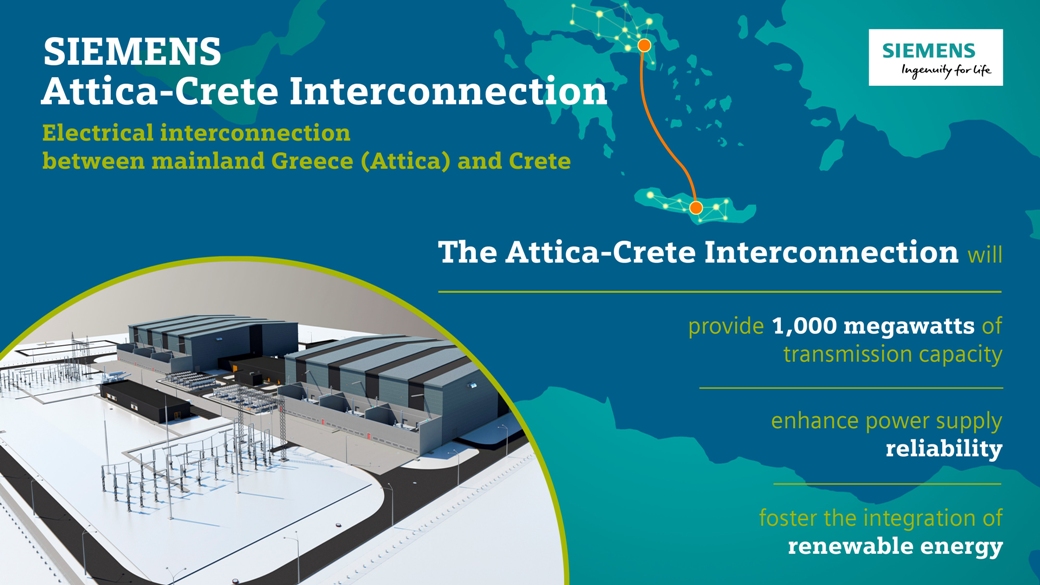A consortium led by Siemens Gas and Power (Siemens Energy) has been awarded a turnkey contract for two converter stations for the Greek high voltage direct current (HVDC) link that will connect Crete, Greece’s largest and most populous island, with the mainland of Greece.
Currently, Crete’s energy supply mainly relies on outdated fossil-fueled power plants, which will be shut down by the end of 2022.
The project will enable an exchange of electricity of up to 1,000 mw to enhance reliability of the power supply and facilitate integration of renewable energy sources in the power grid. Customer is Ariadne Interconnection S.P.S.A., a wholly owned entity of the Greek independent power transmission operator IPTO. Commissioning of the interconnector is scheduled for mid-2023. Total order volume for the consortium is 370 million Euros.
Siemens will cooperate in a consortium with one of the leading construction companies in Greece, TERNA S.A. (Member of GEK TERNA Group). The EPC (Engineering, Procurement and Construction) turnkey contract comprises of design, supply and installation of a 1,000 MW converter system at a direct-current voltage of ±500kV, a gas-insulated switchgear (GIS) substation on Crete including 10-year service contracts for the GIS and Control and Protection systems of both the HVDC stations.
The two converter stations will be linked by a 330-km-long DC power cable.
The two converter stations – one located in the Attica region near Athens and the other near Damasta in the north of Crete – will be linked by a 330-km-long direct-current (DC) power cable. Terna will be responsible for the HV distribution systems, the entire civil works and the erection of all equipment of the HVDC project.
Currently, Crete’s energy supply mainly relies on outdated fossil-fueled power plants, which will be shut down by the end of 2022. The interconnector will facilitate the transmission of energy from renewable resources generated on the Greek mainland to the island. Thus, the interconnector will reduce carbon emissions by 500,000 tonnes in its first full year of operation.
Both converter stations will use HVDC Plus voltage-sourced converters in a modular multilevel converter arrangement (VSC-MMC).
“The Attica-Crete interconnector is another example of the added-value that Siemens Energy can offer customers to advance the global energy transition. I’m very proud that our proven state-of-the-art HVDC technology will enable an increased integration of renewable energy, reduce reliance on fossil fuel, and enhance grid security,” said Beatrix Natter, CEO of the Transmission Division at Siemens Energy.
Both converter stations will use HVDC Plus voltage-sourced converters in a modular multilevel converter arrangement (VSC-MMC) that converts AC to DC, and back to AC on the other side of the link. The system combines the advantages of HVDC transmission with benefits like AC voltage control, black-start capability, minimized power transmission losses, grid stabilization and high availability.



